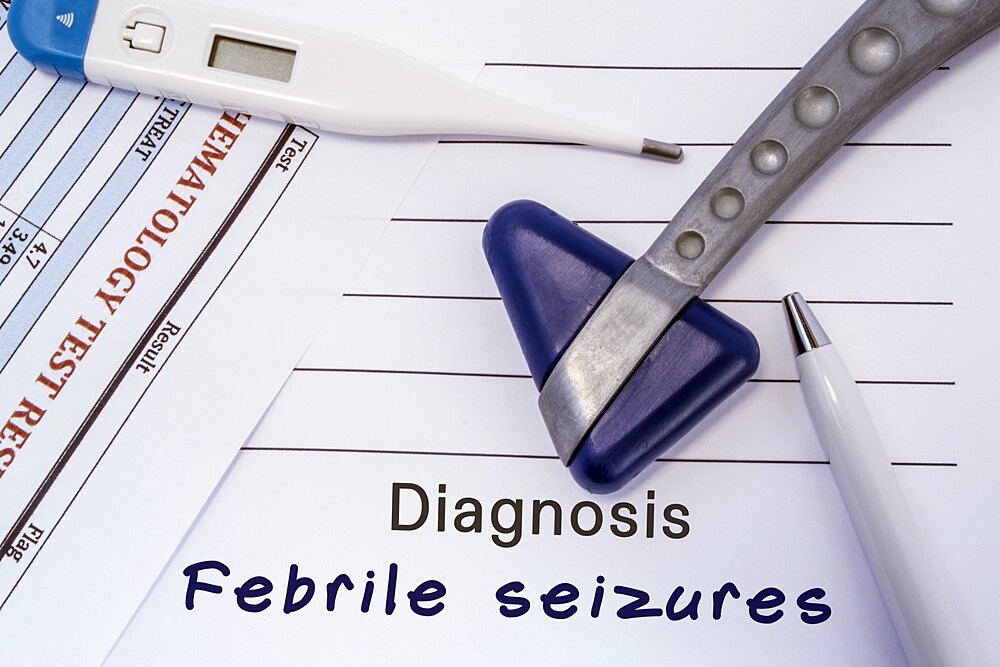Babies and infants are particularly affected by febrile convulsions. The cramps often cause horror for the parents, but are usually harmless.
What is a febrile seizure?
A febrile convulsion is a seizure that can occur in high fever, especially in babies and small children. This causes cramped muscles and muscle twitching, and the child becomes apathetic or unconscious. Affected are mostly children between the age of 6 months and 5 years, most often between the first and the third year of life.
The phenomenon looks frightening for the parents, but usually the cramp has no consequences and lasts only a few minutes. On the whole it also occurs rather rarely: Only about three to five percent of all children experience the febrile convulsion once.
Simple or complicated febrile convulsion?
A distinction is made between a simple and a complicated febrile convulsion:
- Simple febrile convulsion: It lasts three to four minutes at most, in rare cases up to 15 minutes. The simple febrile convulsion does not repeat itself within 24 hours. If a febrile convulsion occurs for the first time in a child, the emergency doctor should be called!
- Complicated febrile convulsion: This type of spasm lasts longer than 15 minutes and often occurs only on one side of the body. Within 24 hours the febrile convulsion can also repeat itself. If the child is younger than three months, the emergency doctor should also be called for this variant.
What causes febrile convulsions?
How exactly the febrile convulsion develops is not yet clear – but there seems to be an inherited susceptibility. Theoretically, however, any illness that leads to fever can trigger a febrile convulsion. Often the reason is rather harmless infections, in which, for example, the upper airways are affected. Only in rare cases are severe diseases the cause of the febrile convulsion.
Symptoms: What happens in a febrile convulsion?
The following symptoms can occur with febrile convulsions:
- Muscle twitching or stiffening
- Bluish discolored lips
- Twisted eyes
- Apathy
- Unconsciousness
After the febrile convulsion, the child is usually exhausted and tired, but otherwise usually recovers quickly.
What can I do if my child has a febrile convulsion?
The first rule that parents should always follow when the child is not well: keep calm! Otherwise it is important to know that you cannot stop the cramp yourself. That is why the treatment is primarily about making sure that the little patient cannot injure himself or herself during the seizure. The following measures are useful in case of a febrile convulsion:
- Don’t leave the child alone.
- Measure the length of the febrile seizure with a watch.
- Lay the child down in such a way that it cannot bump or otherwise injure itself. The cramps themselves cannot and should not be suppressed.
- Loosen the child’s clothes so that it can breathe more easily.
- While the febrile seizure continues, the child must not be given any fluids or food – there is a risk of suffocation.
- After the febrile convulsion, it is advisable to position the child on its side so that saliva can run out of the mouth. The face of the child should always be visible.
Can I prevent febrile convulsions?
There is no guaranteed way to prevent febrile convulsions – not even with antipyretic agents, as the convulsion can occur very suddenly when the fever rises again. In general, fever-reducing measures for children should only be taken when the temperature rises above 39 degrees. In this case, calf compresses or antipyretic medication can help. If the child has a tendency to febrile convulsions, appropriate measures should be discussed with the paediatrician.

